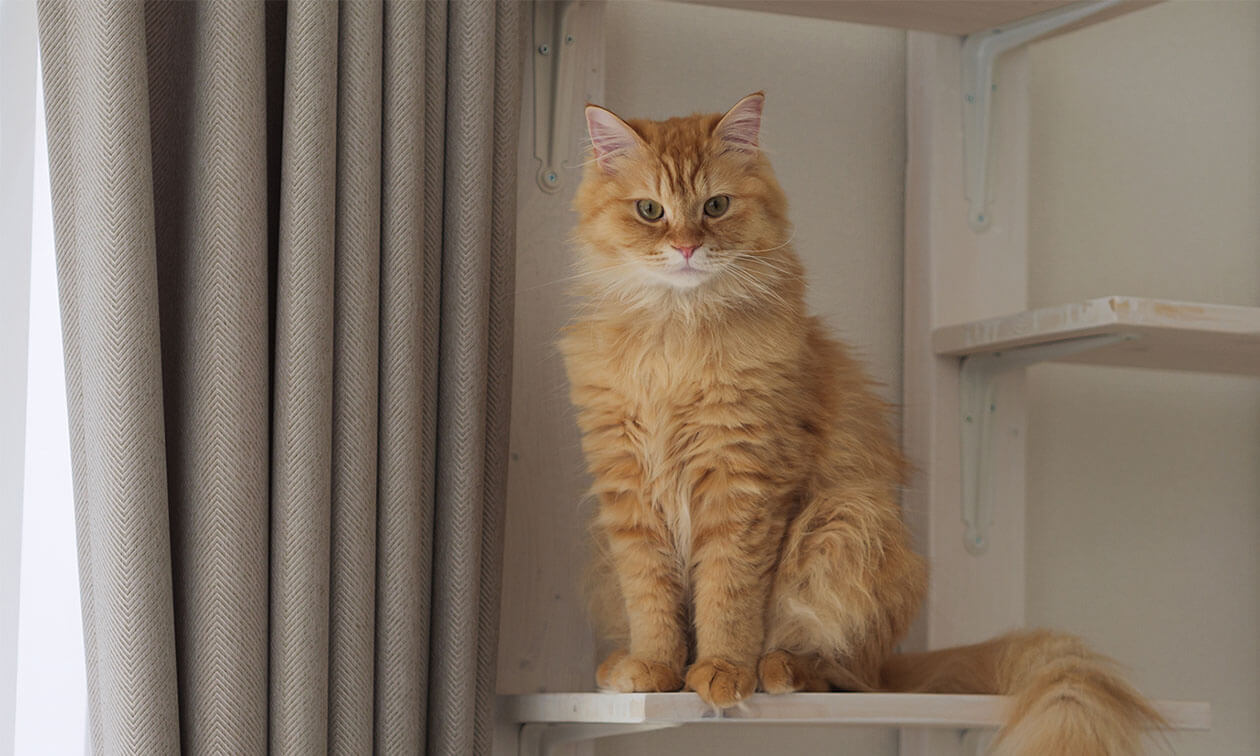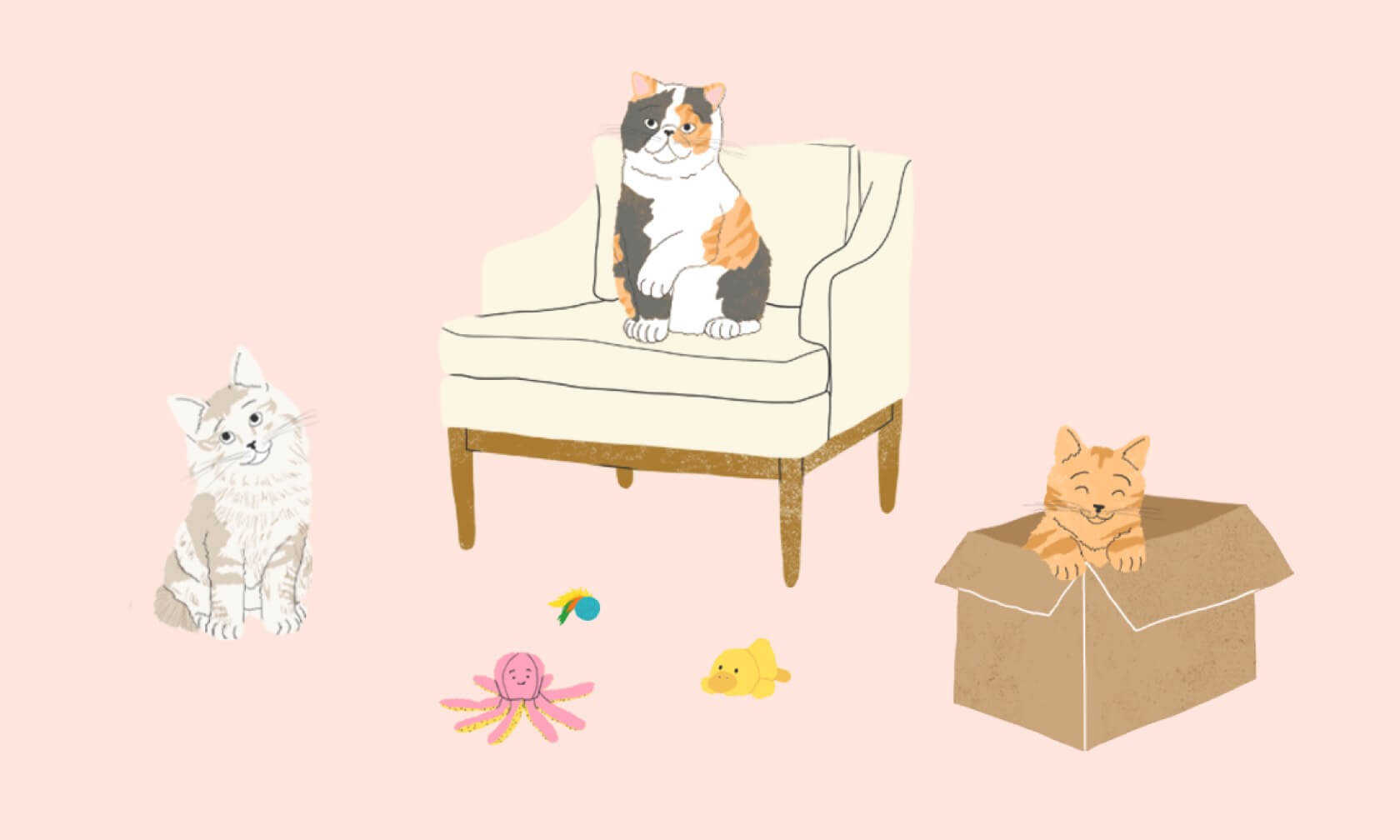Most cats prefer to hang out in high places and relish their time there. Whether it be the top of the refrigerator, a shelf on a bookcase, or a perch on a cat tree, rest assured that they are in their happy place. But why do they like to be above the action? And can you reduce stress and improve relationships between cats just by giving them ways to get up high? The answers may surprise you.
Common Reasons Cats Like High Places
Instinct is a driving force behind a cat’s preference for lofty perches. From a biological and evolutionary standpoint, cats are prey and predators. Before cats graced our homes, they were potential meals for wild animals and sought out small rodents and birds to satisfy their hunger. An aerial viewpoint helps with both. Although these survival skills are less vital for the typical house cat, they remain a part of their genetic makeup. High perches are considered one of the key resources every cat needs to feel safe and secure. That’s because they check off a lot of boxes.
- They provide safety from potential dangers. In the wild, this meant predators like eagles and coyotes. In the home, this can be boisterous children or an overly interested dog. It gives cats a private and calm space.
- They increase the ability to spot prey. Even though they aren’t hunting indoors, it’s in a cat’s DNA to seek higher ground. And you can make it part of their “hunting” experience during playtime.
- They keep the peace. In multi-cat households, vertical space between cats may help them get along. Sometimes, a little vertical distance may be all that’s needed to maintain order and avoid confrontation. For example, adding vertical space to a room where you and your cats like to hang out means all the cats can share that space with you but still keep their distance from each other.
- They provide a source of warmth. Heat rises. Therefore, high places are warmer and may be a preferred resting spot, especially during the colder months.
- They satisfy curiosity. Cats are naturally curious. They love to watch and investigate. Being up high gives them a different vantage point to spy on the goings-on below.
- They help them cope with stress and anxiety. Cats are sensitive to changes in their environment, especially new family members and visitors to the home. This can be a real source of stress and anxiety for some cats. Hiding from the perceived threat is a common response. Having a high perch gives them that sense of safety while allowing them to be part of the action and see what’s happening. You may even find that they’re more willing to come down from their perch and engage once they get comfortable. If they’re hiding in another room, they don’t have the same opportunity to safely examine the situation and may be more likely to stay hidden.
- They provide safe sleeping spots. Sleeping is a major “activity” for cats, averaging 15 hours a day. Elevated spots for this important task are popular because of that feeling of safety. A perch with curved or raised edges will prevent your slumbering feline from rolling off, providing even more safety.
Providing More Vertical Space for Your Cat
In addition to satisfying a cat’s penchant for high places, climbing provides physical and mental stimulation. It’s an incredibly important part of having a cat in your home. You can give your cat more vertical space by adding:
- Cat trees. There are a variety of commercially available cat trees that will suit most spaces and budgets. They come in different heights, number of perches and/or compartments, and materials. Some even have built-in toys, beds, and scratching posts. If you can’t find what you are looking for, or you have a creative bug, consider building your own. DIY cat tree plans are available for beginner-level to advanced DIYers.
- Climbing walls. A climbing wall consists of shelves securely mounted to the wall, arranged so your cat can jump from one to the other. Make sure the shelves are wide enough that your cat can safely take a snooze and cover them with a non-slip fabric. DIY climbing wall plans are available or you can buy complete kits.
- Window perches. For cats who love to watch the outside world through a window, these perches are a favorite form of vertical space. They can be bought or DIY, and positioned below, above, or even in the middle of a window. Make sure they are securely mounted with the proper anchors and covered in non-slip fabric. Remember, keep your windows closed to prevent the escape artists in your feline family from getting out, even if you have screens.
- Cat hammocks. An easy way to add vertical space to your home is with a cat hammock (or two) securely mounted to a wall or windowsill. In addition to the extra height, they offer your cat a comfy space to rest. With both retail and DIY versions available, you will find a style that meets your needs and matches your décor.
- Clear off the top of an appliance or piece of furniture. The top of the refrigerator is a favorite spot for many cats to lounge up high, but other locations will also work. Consider clearing a space on top of a bookcase, cabinet, or buffet. Just ensure your cat can make the jump. If it’s too high, they may need a step or lower platform to shorten the distance, and everything should be secured to the wall. Cats can create a lot of pressure when they jump on and off things. You don’t want a bookcase or table toppling over.
Plenty of vertical space throughout your home satisfies your cat’s instinctive need to be up high. It provides warmth and comfort while enriching their environment and helping them thrive.
ZPC-02518



